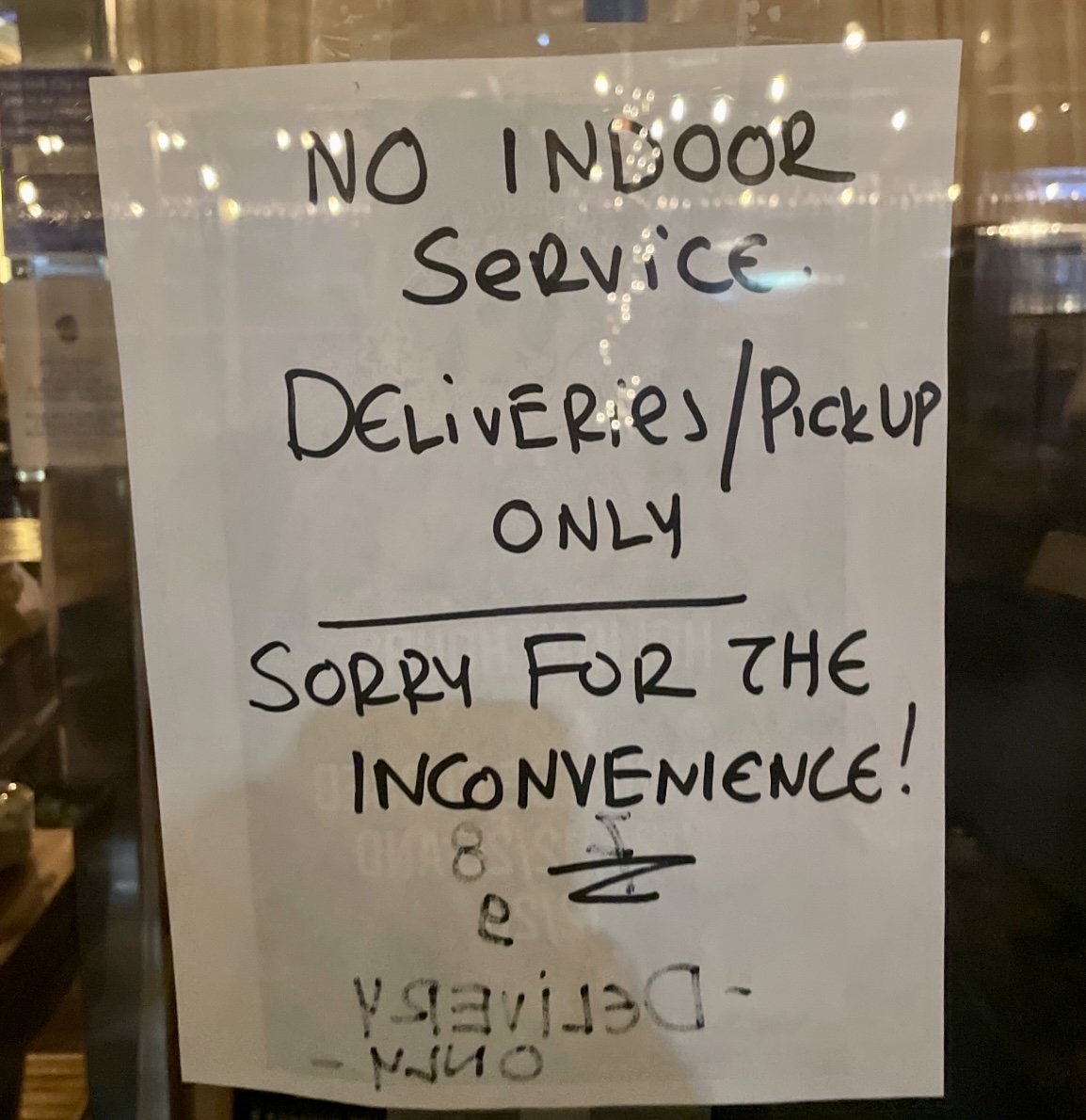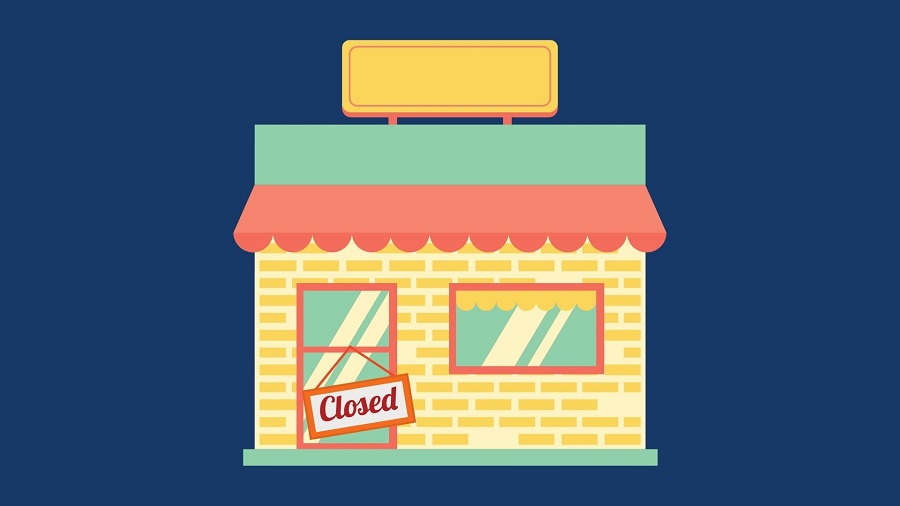When Omicron Sidelines Your Restaurant's Front-of-House Staff 1/14/2022

The Thirsty Koala, an Australian-themed restaurant in Astoria, NY, is basically an extension of my living room. I know that I can go there any day during the week and likely run into any of several friends either dining in the restaurant or sitting at the bar. And if not, I’ll enjoy myself chatting with the servers, bartenders and owners, who are also friends.
That’s the wonderful thing about neighborhood restaurants; the staff are typically locals who make up the fabric of the community. But during a pandemic, unfortunately, such a tight-knit group of customers and staff can work against it, such as when Omicron recently tore its way through my neighborhood.
In late December one of the bartenders was married, and most of the front-of-house staff of The Thirsty Koala attended. Unfortunately, more than a dozen people from the wedding eventually tested positive for COVID, including many of the staff, all of whom were already vaccinated or even boosted. And while most just came down with minor symptoms, due to the resulting quarantines, indoor dining at the restaurant came to a halt the week leading up to New Years. (I also happened to catch COVID around that time, though I was asymptomatic.)
“We had to call to cancel all of our reservations and thankfully everyone was understanding and sympathetic,” says Katherine Fuchs, Co-Owner and Executive Chef at The Thirsty Koala. “Since the back-house staff wasn’t impacted, we were able to pivot to takeout and delivery service only and posted a sign on the door alerting passerby to that fact.”
While the restaurant was closed for several days as Fuchs scrambled to find help to open up for New Year's, shutting down indoor dining for a few days no doubt had a financial impact. “If you compare the week we were closed to our pre-pandemic numbers, it was a heavy blow to our bottom line, as our numbers for that week were historically stellar.” (The restaurant – along with many others – was closed during this week during COVID’s peak in 2020, so comparisons against that year are difficult to make.).
Fuchs is not alone. According to a recent New York Times article, the latest Omicron variant has been impacting retail and foodservice locations in those areas where it’s surging, with New York City and the Northeast being hit particularly hard. And while traffic may not be at pre-pandemic levels, it’s still too much for retail and restaurants dealing with reduced staff levels caused by employees either COVID positive or else waiting on test results after being exposed to someone else who has been infected. (Don’t even get me started on the testing situation!). In New York City in December, it was hard to avoid being exposed to someone who was positive.
Many retail chains interviewed in the Times article were forced to cut store hours and reduce services just to keep things going, and in many cases, that wasn’t even enough. But for community-based independent restaurants or shops that don't have a large staff to begin with, Omicron leads to temporary closures, or in the case of The Thirsty Koala, switching to takeout and delivery only for a week.

Here's the challenge: The new variant is super-transmissible, and people are getting it regardless of whether they are vaxxed or masked up. This makes people in customer-facing jobs particularly vulnerable to it. So in areas where Omicron is now surging, you can pretty much expect that it will hit your staff at some point.
On a positive note, as the cases are not as severe, once staff recover, they'll have protection against it – at least until another variant comes along. Fingers crossed.
How to prep for a surge in your area
So what’s a restaurant or small retail business to do to prepare for the inevitable and minimize risk as Omicron spreads to other areas? Here are some of the lessons learned by The Thirsty Koala’s Fuchs:
Educate your staff on the new variant: Many people believe that they are fully protected with the vaccine, and while the severity of infection may be less if they get it, they are still capable of transmitting it to others. Plus, over the duration of the pandemic, people have become more lax in their personal responsibility, so it’s critical to emphasize the importance of the basics we learned at the beginning of the pandemic, such as social distancing, handwashing, masks and sanitization.
Come up with a backup plan: In the event that your best efforts still fail and the staff gets hit with the virus, you want to have a plan in place to keep operations running. This means having backup staff ready to go. “If you’re a small operator like we are, this is challenging,” says Fuchs. “There are platforms that provide temporary staffing in hospitality like JitJatJo, which I am looking into now. Another possibility is creating a staff sharing program with your fellow local restauranteurs. This will take some coordination, cooperation and cross-training, but I think it could be a feasible alternative.”
If the worst-case happens: Have a worst-case scenario plan in place in the event that the entire front-of-house staff is sidelined, such as flipping to takeout and delivery only (most restaurants by now have had to rely on this to survive the early days of the pandemic, so they should have some experience in handling it). Also, have plans in place for messaging customers via your website, social media, and outdoor signage.
“Whatever you decide to do, write it down,” advises Fuchs. “It helps to formalize the process and will enable you to navigate the situation in an efficient and effective way. Get input and don’t give up!”
Buyers and sellers of foodservice products can meet face-to-face virtually at ECRM's Foodservice sessions:
- On and Off Premises Adult Beverage: March 1 to 3, 2022
- Foodservice: March 21-23, 2022
- Foodservice Supplies & Equipment: March 23 to 24, 2022
- Foodservice Beverage: March 23 to 24, 2022
- Foodservice Sustainability: June 22 to 23, 2022

